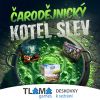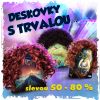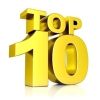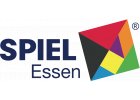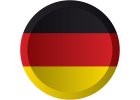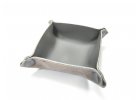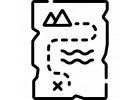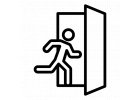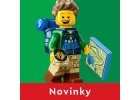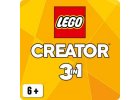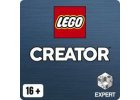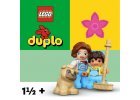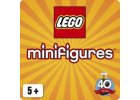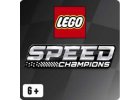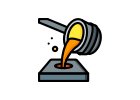Magic The Gathering
Magic: The Gathering - everything you need to know to get started
Magic: The Gathering is a card game in which wizards cast spells, summon creatures and use magic items to defeat their opponents.
In the game, two or more players build a deck of 60 cards with different abilities. They choose these decks from a pool of approximately 20,000 cards created during the game's development. Although the game resembles fantasy role-playing games such as Dungeons and Dragons, it has significantly more cards and more complex rules than other card games.
The card game Magic: The Gathering (MTG) took the world by storm in the 1990s and is still played and collected by millions of players and collectors worldwide. You can find the complete range of the latest Magic: The Gathering sets as well as boosters, starter kits, commander decks and other Wizards of the Coast products and accessories right here. And if you're interested in learning more about the game itself, read on.
Bestsellers


Play time
-
Age
13+
Player count
2-5
Language
![]()

Play time
-
Age
13+
Player count
2-5
Language
![]()

Play time
-
Age
13+
Player count
2-5
Language
![]()

Play time
-
Age
13+
Player count
2-5
Language
![]()

Play time
-
Age
13+
Player count
2-5
Language
![]()

Your friendly neighborhood Spider-Man swings into Magic: The Gathering, and not a moment too soon!
Play time
-
Age
13+
Player count
2-5
Language
![]()

Your friendly neighborhood Spider-Man swings into Magic: The Gathering, and not a moment too soon!
Play time
-
Age
13+
Player count
2-5
Language
![]()

Immortalize an iconic moment with the Marvel's Spider-Man Scene Box. Power up your deck or collection with these six Borderless Scene cards and piece them together to reveal the full story. A devious ambush adds triple the trouble for Spider-Man! Can he save the city and still make it to date night with MJ?
Play time
-
Age
13+
Player count
2-5
Language
![]()

Your friendly neighborhood Spider-Man swings into Magic: The Gathering, and not a moment too soon! Gather web-slingers from across the Spider-Verse and team up to take down the sinister foes that threaten the city. Keep your Spider-Senses primed to spot Borderless treatments that leap right off the page!
Play time
-
Age
13+
Player count
2-5
Language
![]()

Blast off into Magic's space-fantasy set! Chart a course through the Sothera system to explore distant planets, wield dazzling magic, and wage war with alien factions.
Play time
-
Age
13+
Player count
2-5
Language
![]()

Blast off into Magic's space-fantasy set! Chart a course through the Sothera system to explore distant planets, wield dazzling magic, and wage war with alien factions.
Play time
-
Age
13+
Player count
2-5
Language
![]()

Blast off into Magic's space-fantasy set! Chart a course through the Sothera system to explore distant planets, wield dazzling magic, and wage war with alien factions.
Play time
-
Age
13+
Player count
2-5
Language
![]()

Blast off into Magic's space-fantasy set! Chart a course through the Sothera system to explore distant planets, wield dazzling magic, and wage war with alien factions.
Play time
-
Age
13+
Player count
2-5
Language
![]()

Blast off into Magic's space-fantasy set! Chart a course through the Sothera system to explore distant planets, wield dazzling magic, and wage war with alien factions.
Play time
-
Age
13+
Player count
2-5
Language
![]()

Learn to play Magic and collect FINAL FANTASY-themed cards with a kit full of everything you need to start playing. This Magic: The Gathering—FINAL FANTASY Starter Kit contains 2 ready-to-play 60-card decks, 2 deck boxes to store them in, 1 Magic play guide booklet, 4 double-sided tokens, 2 double-sided reference cards to aid you as you play, and two Magic: The Gathering Arena code cards to...
Play time
-
Age
13+
Player count
2-5
Language
![]()

Enter battle in Magic: The Gathering with some of the most iconic characters, items, and moments from the sixteen core games in the legendary FINAL FANTASY series. Step into these unforgettable stories and give them a whole new spin!
Play time
-
Age
13+
Player count
2-5
Language
![]()

Enter battle in Magic: The Gathering with some of the most iconic characters, items, and moments from the sixteen core games in the legendary FINAL FANTASY series. Step into these unforgettable stories and give them a whole new spin! This Bundle includes a full inventory of treasures, with 9 Magic: The Gathering—FINAL FANTASY Play Boosters
Play time
-
Age
13+
Player count
2-5
Language
![]()

Battle your friends with FINAL FANTASY’s iconic heroes, villains, and spells in Commander, Magic’s most popular multiplayer format.
Play time
-
Age
13+
Player count
2-5
Language
![]()

Battle your friends with FINAL FANTASY’s iconic heroes, villains, and spells in Commander, Magic’s most popular multiplayer format.
Play time
-
Age
13+
Player count
2-5
Language
![]()

Enter battle in Magic: The Gathering with some of the most iconic characters, items, and moments from the sixteen core games in the legendary FINAL FANTASY series. Step into these unforgettable stories and give them a whole new spin!
Play time
-
Age
13+
Player count
2-5
Language
![]()

The entire FINAL FANTASY saga is here! You will step into the worlds of the beloved FINAL FANTASY RPG series' sixteen mainline games. You'll cast powerful spells, call upon classic summons, and even visit your favorite locations on the back of a Chocobo. Countless elements from the games are here for players to weave together their own stories.
Play time
-
Age
13+
Player count
2-5
Language
![]()

Every Magic: The Gathering—FINAL FANTASY Collector Booster serves up treasure, boasting Rares and/or Mythics, Traditional Foils, and special alternate-frame cards.
Play time
-
Age
13+
Player count
2-5
Language
![]()

"Land station" z edice Core Set 2020 nesmí chybět při žádné organizované události Sealed Decku, nebo Draftu. Obsahuje 400 základních zemí (cca 80 od každé).
Play time
16-30
Age
13+
Player count
2
Language
![]()

Tarkir faces a full-scale draconic assault, pitting clan against clan and all of civilization against a maelstrom of wings, claws, and fire. Choose one of five clans and discover your favorite way to play!
Play time
-
Age
13+
Player count
2-5
Language
![]()

Return to the plane of glorious gothic horror and dig up fan-favorite reprints from every Innistrad set ever made with Innistrad Remastered. Cackle with delight at Showcase treatments from Innistrad’s past and behold all-new borderless art that’s hauntingly boo-tiful. Plus, every booster arrives nostalgia-packed with a Retro frame card!
Play time
-
Age
13+
Player count
2-5
Language
![]()

Leave your competition in the dust! Get behind the wheel in Aetherdrift, a multiversal race filled with adrenaline-fueled Magic gameplay across three planes!
Play time
-
Age
13+
Player count
2-5
Language
![]()

Leave your competition in the dust! Get behind the wheel in Aetherdrift, a multiversal race filled with adrenaline-fueled Magic gameplay across three planes!
Play time
-
Age
13+
Player count
2-5
Language
![]()

Leave your competition in the dust! Get behind the wheel in Aetherdrift, a multiversal race filled with adrenaline-fueled Magic gameplay across three planes!

Leave your competition in the dust! Get behind the wheel in Aetherdrift, a multiversal race filled with adrenaline-fueled Magic gameplay across three planes!
Play time
-
Age
13+
Player count
2-5
Language
![]()


